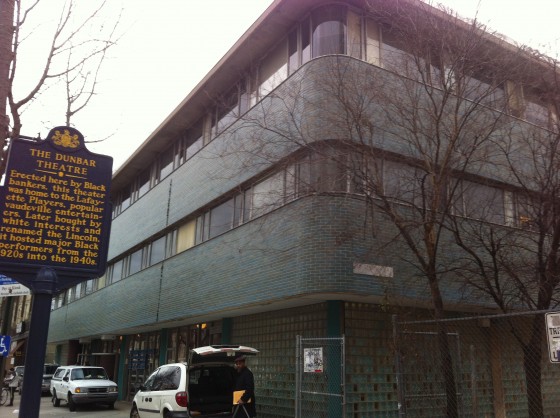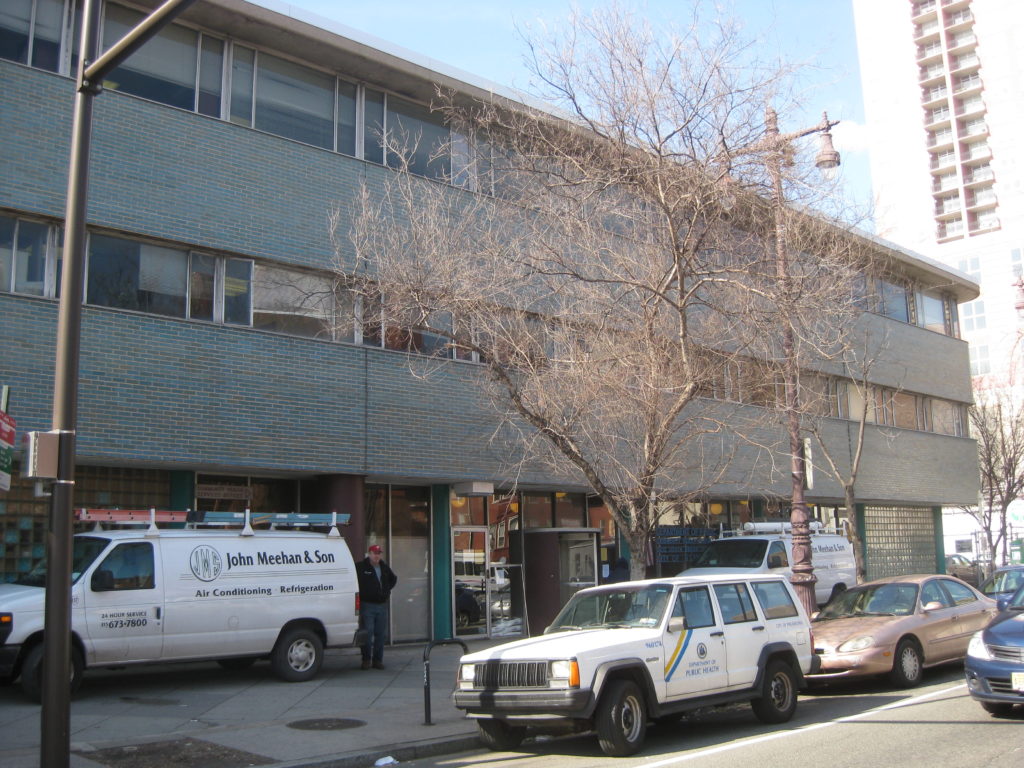Upon first glance, District Health Center No. 1 is an unassuming building just south of Broad and Lombard Streets. A closer look reveals a glazed façade of stylized blue and gray brick that runs across the building like a tile mosaic in between the second and third stories, measured by ribbon windows that stretch around the sleek curves of the building. It’s where modern architects in the middle of the twentieth century envisioned the style of urban architecture was headed.
The Health Center, located at 500 S. Broad St., appeared on this year’s Endangered Properties list compiled by the Preservation Alliance for Greater Philadelphia. The City is proposing to vacate this center, like it’s proposing to leave the Roundhouse, when its new West Philly location opens.
At that time, the site is likely to be marketed for redevelopment. Designed by Montgomery & Bishop in 1959, it is one of ten health centers constructed after World War II, when the city contracted prominent architects to design many of its public buildings, including libraries and police and fire stations.
It occupies a valuable Center City location, and is just two blocks from the Kimmel Center. The Preservation Alliance recommends this building be adopted for new uses. It’s suggested the possibility of transforming its Lombard Street surface lot into a public plaza to increase the building’s visibility and create an important neighborhood entity. No protections against demolition currently exist. If the site is becomes included in the National Register of Historic Places, it would be eligible for preservation tax credits.
While the building lacks the ornate detail of City Hall, it represents ideas in modern thinking that existed before the modern era became the wireless age. Walking down South Broad Street, we see buildings from different time periods. You have City Hall, the world’s tallest masonry building, finished around 1899; the French Renaissance-styled Union League House, constructed in 1865, tall office buildings with arches on the ground floor, contemporary monstrosities like the Doubletree, and the Health Center, a look into the McCarthy era. Whatever becomes of the building, it’s a part of history and as citizens of this metropolis we can decide to work towards preserving or destroying the pillars of that history.
–Lou Mancinelli




